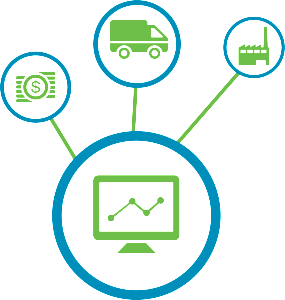
Since the first data warehouses, organizations and developers have been looking for ways to improve integrations and create single sources of the truth for master data across the company and liberate information throughout the enterprise.
Today’s typical integrations usually involve moving batches of data between databases in regular intervals via automated extracts and loads via third-party integration tools. While this method certainly works well to break down data silos between departments, it is far from a perfect process. Data traffic volumes, transformation and synchronization complexities, the potential for stale data, and not being able to access data as-needed all limit the effectiveness of these traditional data integration methods.
With Salesforce, you can eliminate these major pain points by using Lightning Connect. Lightning Connect creates a new object within your Salesforce org for each external data source connected. These new objects are called “external objects” and allow you to incorporate your external data as if it actually was loaded into Salesforce. In reality, the external data is being accessed in real time on an as-needed basis and blended into the Salesforce user experience.
Real-World Applications of Lightning Connect
One use case is an organization that needs an account executive to view order data for their accounts. Instead of every new order having to be batch exported, transformed and uploaded at regular intervals, the order data is only accessed when an account executive views the account. This results in a massive decrease in the amount of data that needs to be synced, with the added benefit of having real-time order data (as opposed to a daily or weekly update).
The data in external objects is still accessible via the global search and can be setup to be writable (external objects are read-only by default). Lightning Connect uses an OData protocol, or a developer can create a customer adapter by using the Apex Connector Framework to connect virtually any data source.
Salesforce has taken a huge leap forward in the world of data integration with Lightning Connect. In the era of cloud-based data, it is exciting for us to see this step towards more effective data integration.

Since the first data warehouses, organizations and developers have been looking for ways to improve integrations and create single sources of the truth for master data across the company and liberate information throughout the enterprise.
Today’s typical integrations usually involve moving batches of data between databases in regular intervals via automated extracts and loads via third-party integration tools. While this method certainly works well to break down data silos between departments, it is far from a perfect process. Data traffic volumes, transformation and synchronization complexities, the potential for stale data, and not being able to access data as-needed all limit the effectiveness of these traditional data integration methods.
With Salesforce, you can eliminate these major pain points by using Lightning Connect. Lightning Connect creates a new object within your Salesforce org for each external data source connected. These new objects are called “external objects” and allow you to incorporate your external data as if it actually was loaded into Salesforce. In reality, the external data is being accessed in real time on an as-needed basis and blended into the Salesforce user experience.
Real-World Applications of Lightning Connect
One use case is an organization that needs an account executive to view order data for their accounts. Instead of every new order having to be batch exported, transformed and uploaded at regular intervals, the order data is only accessed when an account executive views the account. This results in a massive decrease in the amount of data that needs to be synced, with the added benefit of having real-time order data (as opposed to a daily or weekly update).
The data in external objects is still accessible via the global search and can be setup to be writable (external objects are read-only by default). Lightning Connect uses an OData protocol, or a developer can create a customer adapter by using the Apex Connector Framework to connect virtually any data source.
Salesforce has taken a huge leap forward in the world of data integration with Lightning Connect. In the era of cloud-based data, it is exciting for us to see this step towards more effective data integration.



